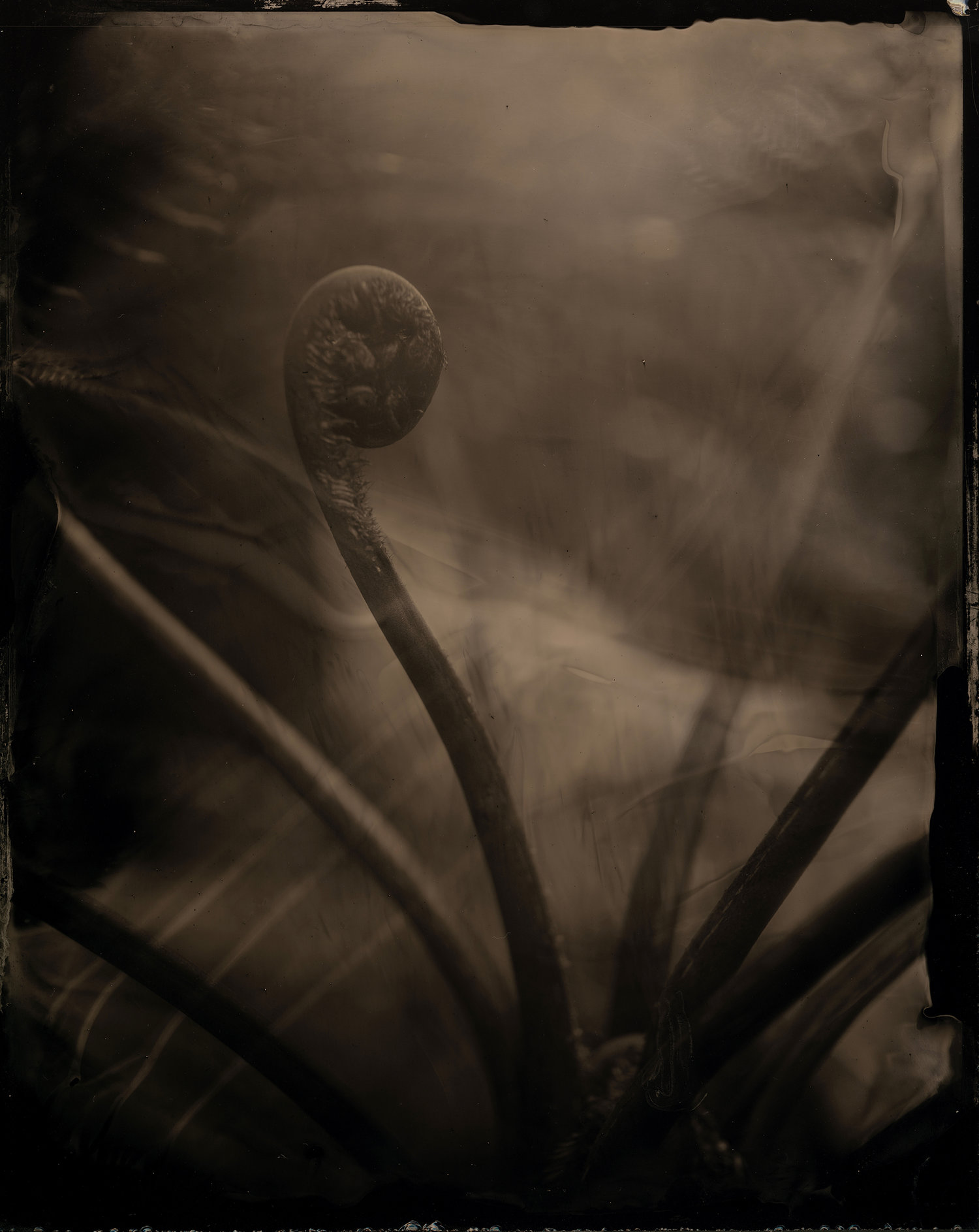For my second solo exhibition at SBDAC, I created ethos, an assemblage of both hand-made, silver gelatin prints created from film negatives as well as images created by the alternative photographic process known as colloidan photography. This technology was developed during the birth of photography in the mid 1800’s, and employs a large format camera to record images on glass and metal plates. A hand-mixed combination of cotton cellulose, iodide, bromide, alcohol and ether are poured onto the plate in the darkroom before sensitization in a silver nitrate bath. The plate is exposed in the camera, then brought back to the darkroom to be developed. Each plate must be cleaned, colloidan poured, sensitized in silver bath, exposed, developed, washed, fixed, three additional washes, allowed to dry overnight and then varnished. The end result is a virtually grainless image, and because this type of photography requires 75%-80% UV light, it “sees” things our human optic coverage does not.
Various factors (humidity, temperature, wind) change the way the colloidan chemistry behaves in a single moment of time, never again to be experienced or reproduced. It’s an extremely contrasted recipe of rapid, back-to-back steps that require slow movement, including a naturally occurring film speed of .5-2, so low light exposures can easily be 10 minutes or longer. That’s an eternity of time in photography for the shutter to remain open, and that’s when it gets phenomenal. This is evident in my 12 minute exposure of a Pacific fern frond titled “Praeter Naturam,”meaning beyond what is natural or normal. This image visually describes the air filled, fluid space of spirit and spontaneity where our extra sensory perception is required.

Praeter Naturam, 8 in. x 10 in., ambrotype, 2017
I was raised in a fairly remote forest in Ohio. It was this wilderness that gave me my First Language, a language that undercuts and surpasses words, teaches fluency in extra sensory perception, and requires a feeling, sensing and intuitive state for communion. Although I didn’t know it at the time, this First Language was revealing itself in a new light during two separate events which ultimately gave birth to ethos.
During a 2016 journey to Reykjavik, Iceland, I was deeply moved by what film critic Paul Schrader has referred to as “sparsity of means.” In comparison to contemporary American culture, Iceland was quieter, slower, earthy and minimal. I realized that what was valued in a community and culture was completely dependent on its history and context, and that history and context was sculpted by the ethos of the people and their relationship to the land. When I returned to my studio, the work had changed. In particular, language and its place in context became an important theme in my research and studio practice. I employed a reductionist approach, eliminating high chroma in my paintings, began a series of large scale, abstract India ink drawings with a glass pen and experimented with alchemizing metal mediums, searching for a way to express this new appreciation of less.
Then, in 2017, I spent two weeks on my family’s property in the Ohio woodlands while working on a welding sculpture commission. Spending time in my tent and sitting next to the creek for hours, I watched as the autumn winds worked hard to bring down an entire canopy of ready leaves. The wisdom of winter. The vocabulary of potential. There’s a language built in there, a conversation about life and what it means to be alive. That’s what the land taught me as a child: how to exist in that space, how to integrate myself into a fully living matrix, how to notice and be part of all the living systems around me.
I value the unknown and the inexplicable because these are crucial and missing elements in our cultural understanding of ‘reality.’ Leaning into uncertainty while working with unforgiving mediums offers an experience of discernment, distillation, reverence and transcendence. I have found that our cultural history is sculpted from what we hold sacred and provides the blueprint for our perception. With this body of work, my intention is to unravel what we know to be true by showing in images what cannot be fully seen, yet always felt.


